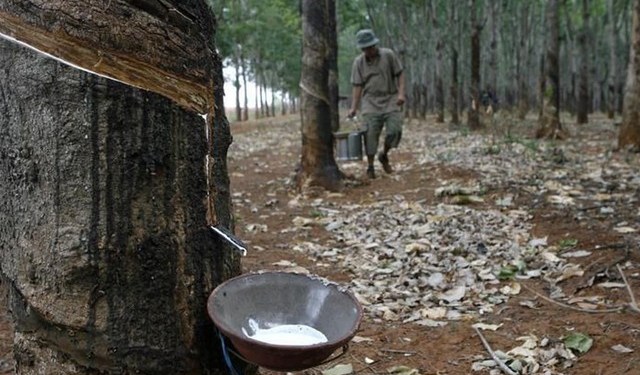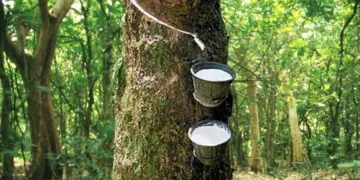NORTH COTABATO, Philippines – Experts blamed the absence of modern processing plants in the province and limited supply of latex and coagulated lumps, not “manipulative cartels,” for the fluctuations in prices of rubber products from North Cotabato.
North Cotabato Gov. Emmylou Taliño-Mendoza, citing studies initiated by researchers, assured farmers, during Monday’s first ever provincial rubber forum in Kabacan town, that mounting perceptions that unscrupulous cartels have been manipulating prices of rubber latex and dried lumps are virtually unfounded.
“Prices of (harvested) rubber in whatever form are not being controlled by `cartels,’ contrary to undue perceptions.” Mendoza told participants to the forum, held at the auditorium of the state-run Mindanao State University at the town proper of Kabacan.
The provincial government initiated the forum to provide a venue for farmers and other stakeholders, including traders, to discuss and resolve the issues and constraints besetting the rubbery industry in the province.
Mendoza said while thousands of farmers have already shifted to propagation of rubber trees as a more profitable agricultural venture, the province still produces a limited volume of processed rubber.
Quality control
“Many of our farmers have just shifted to rubber farming. We need to wait for a little more time patiently. There is also this `law of supply and demand’ that also affects the prices of rubber products,” Mendoza said.
Bonifacio Tan, chief executive officer of the Farma Rubber Products, which buys rubber lumps from local farmers, said poor quality of coagulated sap harvested from rubber trees is also one reason for the unstable buying prices.
Traders have long been asserting that local rubber producers also do not have any common quality standard for their products.
“Prices of rubber products, thus, are also affected by the quality of products from the rubber farms in the province,” Tan said.
North Cotabato, which is under Administrative Region 12, is now Central Mindanao’s top producer of rubber, second to the Zamboanga Peninsula and the island province of Basilan, a component area of the Autonomous Region in Muslim Mindanao.
Mendoza said her office will ask the Department of Trade and Industry and the Department of Agriculture to embark on more capacity-building intervention programs to maximize the productivity of rubber farmers in North Cotabato.
A promising industry
There are now 55,000 hectares of arable lands in the province planted with rubber trees (Hevea braziliensis), which is also recommended by the Department of Environment and Natural Resources as a better specie for reforestation of private lands, assured of care and protection from farmers owing to its high agricultural value.
The Mendoza administration already earmarked P25 million for the provincial government’s rubber development program, apart from operating a two-hectare rubber nursery inside the sprawling provincial capitol compound in Barangay Amas in Kidapawan City.
So promising is the propagation of rubber trees that even farmers in Maguindanao, which is North Cotabato’s closest neighbor, has lately been shifting to rubber farming as a means of livelihood.
The office of Maguindanao Gov. Esmael Mangudadatu has, in fact, dispersed to Moro and Christian farmers almost a million rubber tree seedlings since he was first elected to office in 2010.
Mangudadatu even used as his campaign pitch, during the recent election period, his plan of helping farmers convert non-productive lands in the province into rubber plantations if re-elected.
Participants to Monday’s North Cotabato provincial rubber forum agreed to organize technical working groups to maximize the formulation of plans needed to push the local rubber industry forward and build coordination linkages with the Department of Trade and Industry, Department of Agriculture and markets in the country and abroad.
Source: philstar.com



























